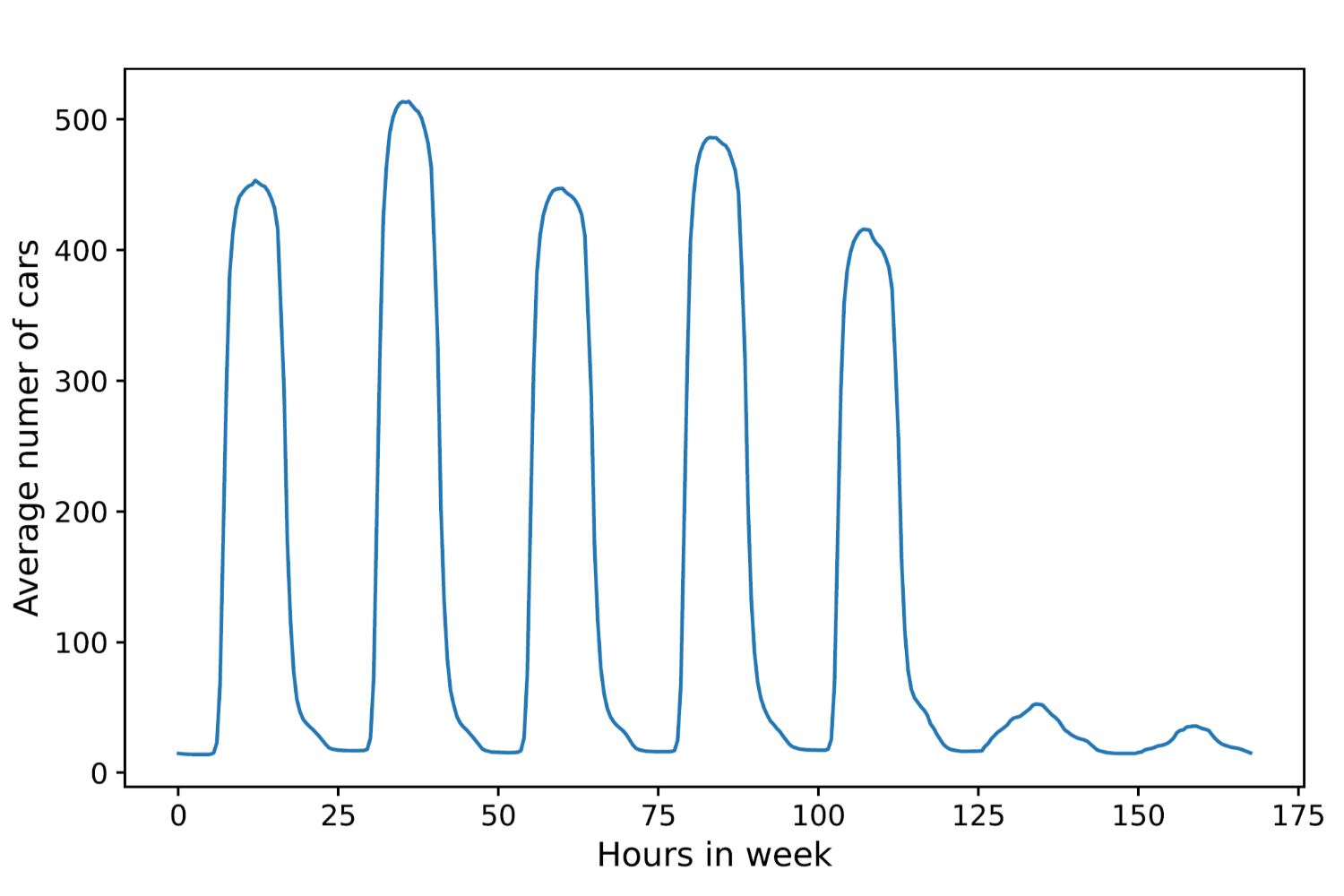Parking demand prediction
Student information
Author: Agata Oskroba
Institution: Maastricht University
Graduation year: 2024
Parking Demand Prediction: Time Series Forecast for Subscription and Reservation Customers with Event-Correction Framework
This research explores time series forecasting of parking demand for subscription and reservation customers. Regression models were implemented in a rolling window setting in two different tasks.
A classical time series regression model predicts subscription customer occupancy.
An event correction framework to calculate parking demand in time for subscription customers based on two separate models forecasting differences between scheduled and actual arrival/departure time, and arrival and departure times of expected returns.
Outline
The mobility sector and parking industry are experiencing continuous global growth. For Q-Park, a leading parking provider in western Europe, the resulting challenge is to manage high parking demand. The primary issue involves efficiently prioritising and allocating parking spaces to different customer categories to optimise profit and efficiency.
Three customer categories are defined: Long Term Parking (LTP) customers, Pre-booking (PB) customers, and Short-Term Parking (STP) customers. LTP customers hold contracted subscriptions for parking, ensuring they have guaranteed spots. PB customers reserve their spots online in advance, securing their parking needs in advance. In contrast, STP customers are unregistered and unplanned visitors who require parking on an as-needed basis. The problem thus involves finding an optimal solution to prioritise and allocate parking spaces to LTP and PB customers while maximising the utilisation of these spaces for STP customers.
The current management process involves reserving parking spots according to subscription and reservation hours, assuming that customers will use the parking spaces during these pre-scheduled times. However, according to company management, this approach is inefficient, as customers do not always adhere to their subscriptions or reservations.
If there were a way to determine precisely when the LTP and PB customers will arrive, the spots could be offered to STP customers.
This challenge can be effectively addressed as a time series prediction task. Parking occupancy forecasting enables more efficient reservation and allocation process management. Compared to the current process, it is expected to produce more accurate and informative forecasts. Based on historical occupancy and transaction data, it is possible to predict LTP and PB customers’ parking demand. This would facilitate informed decisions for STP customers intake and improve planning.
A traditional approach to time series forecasting is to implement commonly used statistical models as the results are easy to implement and interpret. The fundamental assumption in this approach is consistent data relationships over time. However, it may fail to capture complex patterns changing over time and may struggle with non-stationary series, requiring extensive preprocessing to stabilise the mean and variance. To address these issues, machine learning regression models provide a versatile strategy to manage irregularity, non-stationary and nonlinearity in time series data. So, several regression models were implemented and compared.
Although, Q-Park faces capacity management issues in several facilities, it was decided to apply the methodology to only one. Parking facility ‘Zuidplein 1’ in Rotterdam was selected for this project due to its importance and the reliability of data available.
Given the diverse data sources and types involved in this project, distinct methodologies were deployed to address the volume of LTP and PB customers. LTP customers, with long-term contracts, are expected to visit the parking facility regularly over an extended period, for example: office workers. For these customers, a simple time series regression model is implemented to predict the number of cars in the parking facility at any given time. In contrast, pre-booking demand depends on online reservations and is irregular over time. To forecast demand for PB customers, the relative differences between actual arrival and departure times and the pre-booking start and end times are predicted using regression models to estimate expected arrival and departure times. This approach serves as a correction mechanism for reservation times. Thus, it is refereed in this project to as event-correction framework.
Developing a solution requiring minimal maintenance is an additional objective. The company management therefore prefers establishing global parameters for the prediction models that remain constant over time and do not need regular optimisation. This project aims to assess the feasibility of having such globally optimised parameters.
This thesis investigates how time series forecasting can facilitate parking management. In particular, the experiments focus on answering the research questions:
to what extent can time series regression models accurately predict the parking demand of subscription (LTP) customers;
how effectively can regression models estimate the relative differences between pre-booked reservation times and actual arrival and departure times;
to what extent can the event-correction framework provide accurate and informative predictions for the parking demand of reservation (PB) customers;
does global parameter optimisation result in performance improvement for subscription and pre-booking predictions within the parking facility.

Average weekly occupancy LTP
Conclusions
For predicting parking demand of subscription (LTP) customers, the results demonstrated that Lasso, treebased models and SVR outperformed OLS and provided good results, capturing occupancy patterns and non-linearity effectively. On average XGBoost achieved the best results. These forecasting models could be successfully used in business decision-making.
For PB predictions, Random Forest and XGBoost performed best in estimating time differences between scheduled and actual arrivals and departures although no statistically significant differences were found between these models and Decision Tree or SVR. There is room for improvement for model stability and accuracy over time.
The research confirmed that time series regression models could accurately predict PB parking demand. The event-correction framework demonstrated its potential in providing accurate PB occupancy predictions, showing remarkable potential for increasing business revenue and parking spot allocation management.
